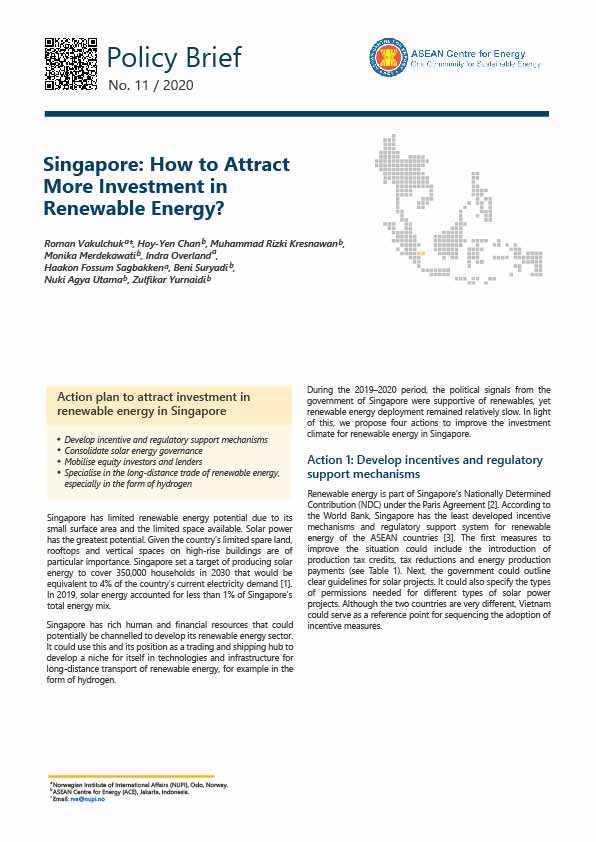
Category
Tag
Author
Roman Vakulchuk, Hoy-Yen Chan, Muhammad Rizki Kresnawan, Monika Merdekawati, Indra Overland ,
Haakon Fossum Sagbakken, Beni Suryadi, Nuki Agya Utama, Zulfikar Yurnaidi
Singapore has limited renewable energy potential due to its small surface area and the limited space available. Solar power has the greatest potential. Given the country’s limited spare land, rooftops and vertical spaces on high-rise buildings are of particular importance. Singapore set a target of producing solar energy to cover 350,000 households in 2030 that would be equivalent to 4% of the country’s current electricity demand . In 2019, solar energy accounted for less than 1% of Singapore’s total energy mix. Singapore has rich human and financial resources that could potentially be channelled to develop its renewable energy sector. It could use this and its position as a trading and shipping hub to develop a niche for itself in technologies and infrastructure for long-distance transport of renewable energy, for example in the form of hydrogen. Renewable energy is part of Singapore’s Nationally Determined Contribution (NDC) under the Paris Agreement. According to the World Bank, Singapore has the least developed incentive mechanisms and regulatory support system for renewable energy of the ASEAN countries.
During the 2019–2020 period, the political signals from the government of Singapore were supportive of renewables, yet renewable energy deployment remained relatively slow. In light of this, we propose four actions to improve the investment climate for renewable energy in Singapore.
Action plan to attract investment in renewable energy in Singapore